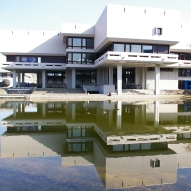| Dokumentenart: | Artikel | ||||
|---|---|---|---|---|---|
| Titel eines Journals oder einer Zeitschrift: | Nephrology Dialysis Transplantation | ||||
| Verlag: | Oxford Univ. Press | ||||
| Band: | 38 | ||||
| Nummer des Zeitschriftenheftes oder des Kapitels: | 1 | ||||
| Seitenbereich: | S. 70-79 | ||||
| Datum: | 22 Mai 2022 | ||||
| Institutionen: | Medizin > Institut für Funktionelle Genomik > Lehrstuhl für Funktionelle Genomik (Prof. Oefner) | ||||
| Identifikationsnummer: |
| ||||
| Stichwörter / Keywords: | CKD, metabolites, nephron mass, uromodulin | ||||
| Dewey-Dezimal-Klassifikation: | 600 Technik, Medizin, angewandte Wissenschaften > 610 Medizin | ||||
| Status: | Veröffentlicht | ||||
| Begutachtet: | Ja, diese Version wurde begutachtet | ||||
| An der Universität Regensburg entstanden: | Zum Teil | ||||
| Dokumenten-ID: | 54266 |
Zusammenfassung
Background. The progression of chronic kidney disease (CKD), a global public health burden, is accompanied by a declining number of functional nephrons. Estimation of remaining nephron mass may improve assessment of CKD progression. Uromodulin has been suggested as a marker of tubularmass.We aimed to identify metabolites associated with uromodulin concentrations in urine and serumto ...

Zusammenfassung
Background.
The progression of chronic kidney disease (CKD), a global public health burden, is accompanied by a declining number of functional nephrons. Estimation of
remaining nephron mass may improve assessment of CKD progression. Uromodulin has been suggested as a marker of tubularmass.We aimed to identify metabolites associated with uromodulin concentrations in urine and serumto characterize pathophysiologic alterations of metabolic pathways to generate new hypotheses regarding CKD pathophysiology.
Methods.
We measured urinary and serum uromodulin levels
(uUMOD, sUMOD) and 607 urinary metabolites and performed cross-sectional analyses within the German Chronic Kidney Disease study (N = 4628), a prospective observational study. Urinary metabolites significantly associated with uUMOD and sUMODwere used to buildweightedmetabolite scores for urine (uMS) and serum uromodulin (sMS) and evaluated for time to adverse kidney events over 6.5 years.
Results.
Metabolites cross-sectionally associated with uromodulin
included amino acids of the tryptophan metabolism,
lipids and nucleotides. Higher levels of the sMS [hazard ratio (HR) = 0.73 (95% confidence interval 0.64; 0.82), P = 7.45e-07] and sUMOD [HR = 0.74 (95% confidence interval 0.63;0.87), P=2.32e-04]were associated with a lower risk of adverse kidney events over time, whereas uUMOD and uMS showed the same direction of association but were not significant.
Conclusions.
We identified urinary metabolites associated with urinary and serum uromodulin. The sUMOD and the sMS were associated with lower risk of adverse kidney events
among CKD patients. Higher levels of sUMOD and sMS may reflect a higher number of functional nephrons and therefore a reduced risk of adverse kidney outcomes.
Metadaten zuletzt geändert: 24 Mai 2023 06:42



 Altmetric
Altmetric